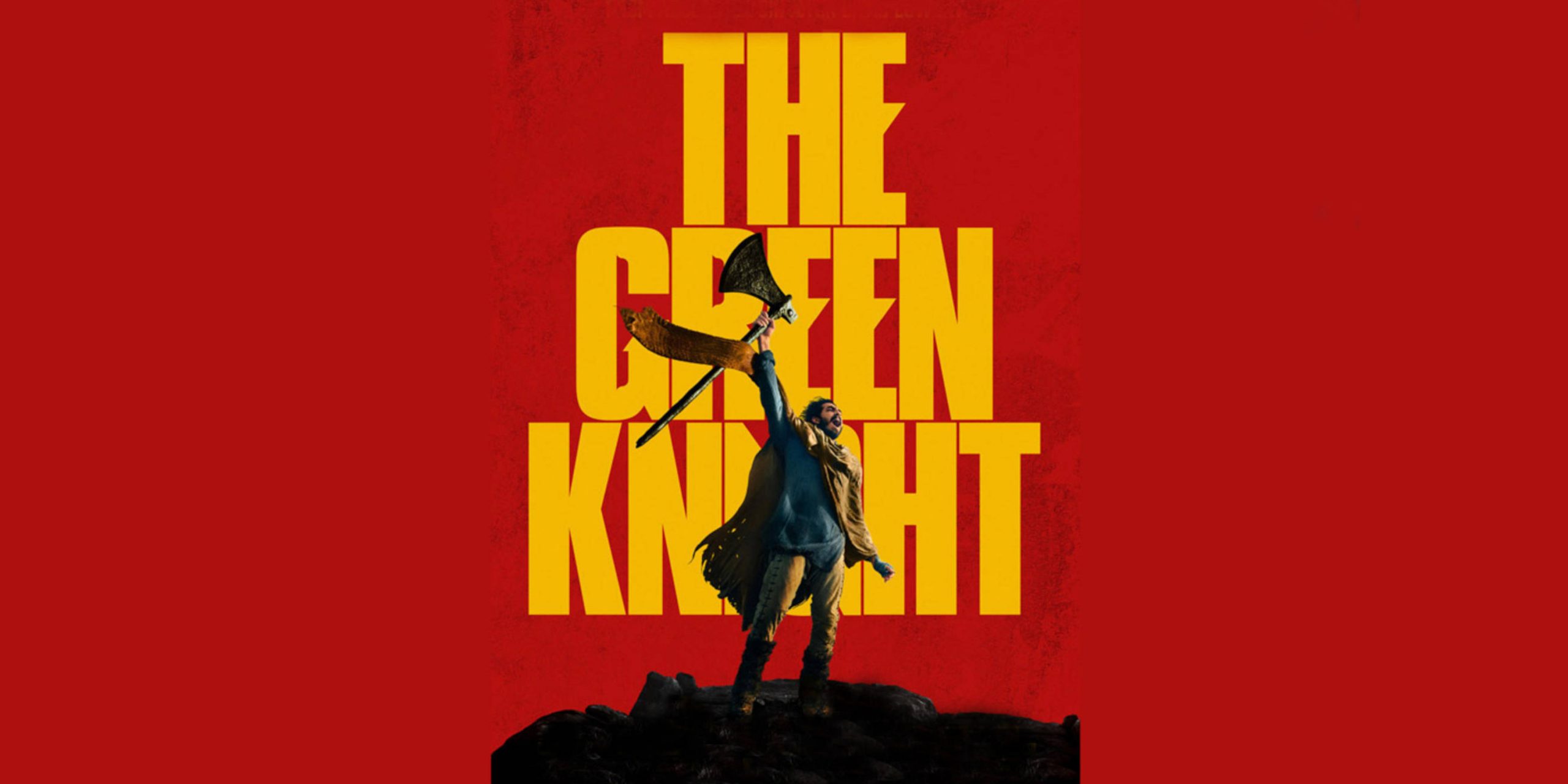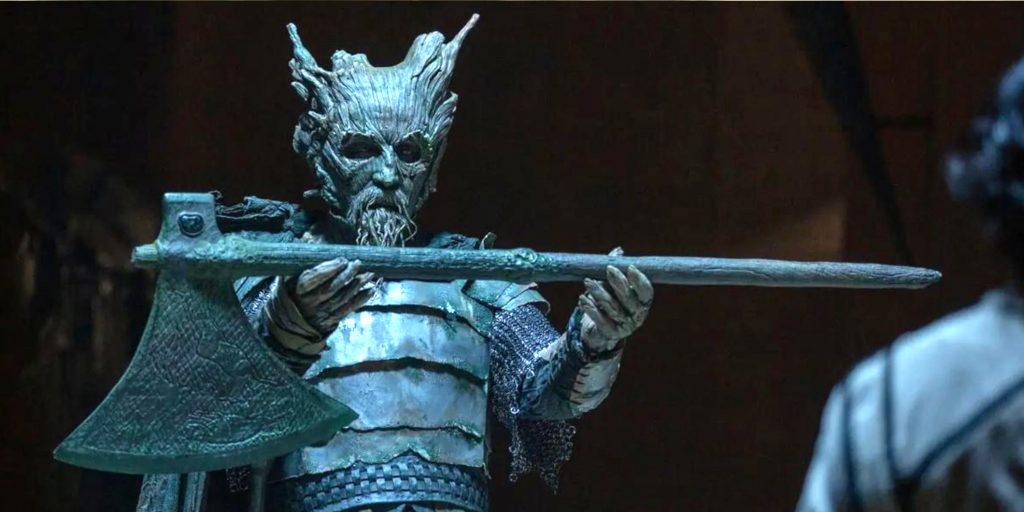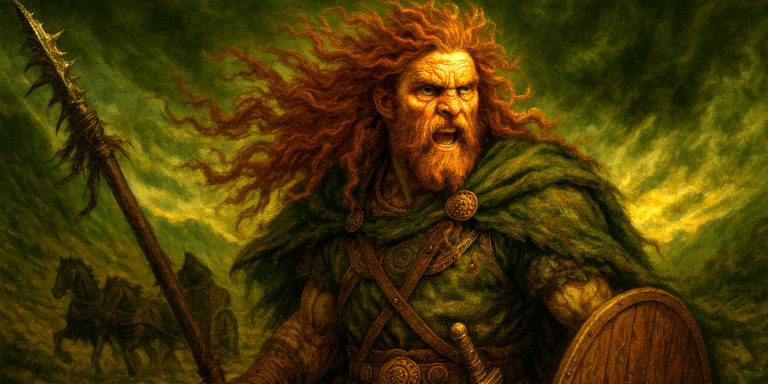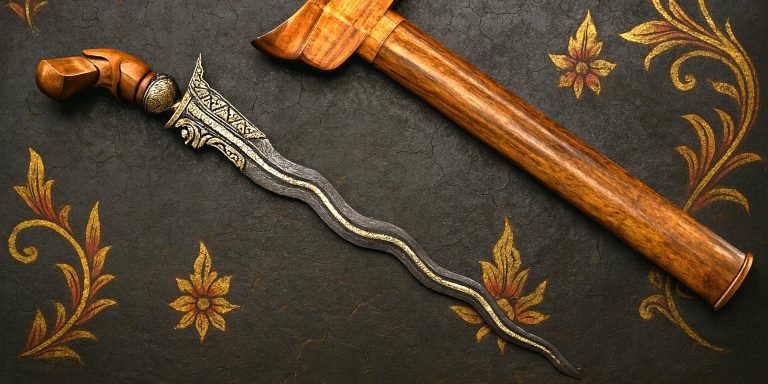
David Lowery’s The Green Knight arrives wrapped in mist, riddles and odd silences that make you wonder if the film is deliberately testing your patience or just politely judging you. Under all that atmosphere sits a story that has been growing for centuries. Once you spot the ancient threads, the film suddenly feels louder and stranger in the best possible way.
This guide pulls apart the legends that fed the film, from medieval poetry to older Celtic ideas that never quite died out. It is part folklore lesson, part detective work and maybe a little gossip about knights who made some questionable life choices.
The Source Material
Sir Gawain and the Green Knight
Everything begins with a late fourteenth century Middle English poem that scholars adore and students often pretend to have read. The poem sets up the beheading game, the impossible journey and the moral unraveling that makes Gawain one of the more complicated knights at Arthur’s court.
Gawain is not the flawless golden boy that some modern tellings pretend he is. He is capable, clever and occasionally a bit too confident. The original poet leans into this tension, letting the Green Knight loom as both a judge and a mirror. The film follows this mood faithfully, even when it wanders into its own dreamy detours.
The Beheading Game Tradition
The beheading challenge might feel like an oddly specific party trick, but it has cousins in older Celtic stories. These tales usually involve a supernatural figure inviting a mortal to strike them, then demanding the same blow in return. It is a ritual of bravery, honour and understanding the consequences of your own bravado.
In the film, the challenge lands with a slow, heavy weight. You can sense everyone at the round table side-eyeing Gawain as if to say, please do not swing the axe, and of course he does exactly that.
Gawain as a Legendary Figure
Medieval writers could not resist adding layers to Gawain. He appears across French, English and Welsh traditions with shifting traits, from courtly hero to someone who has definitely made some questionable decisions after too much mead.
He is often linked to solar imagery, chivalric ideals and the awkward transition from youthful swagger to actual responsibility. The film leans into this softer, more vulnerable version, letting Gawain stumble his way through temptations, visions and the kind of life lessons your aunt would describe as character building.
Arthur, Guinevere and the Court
Lowery’s Arthurian court is not the shining fortress of high medieval romance. It feels faded, fragile and quietly aware that its best days are behind it. This draws from later Arthurian material that hints at a kingdom whose unity is thinning around the edges.
Guinevere’s role is similarly subtle. In many medieval works she serves as the emotional centre of the court, a figure who holds stories together through her presence rather than action. The film echoes this by letting her sit as a calm observer of the chaos about to unfold.
Lady Bertilak and the Temptation Test
In the poem, Lady Bertilak represents the classic chivalric test. She turns courtesy into a psychological maze, pushing Gawain to balance honesty, survival and the social nightmare of rejecting a noblewoman’s attention.
The film expands her into a dual role, weaving in themes of desire, ambition and the uncomfortable truth that courage is not a single act but a thousand quiet decisions.
The Green Knight as a Mythic Composite
The Green Knight has always been a hybrid figure, part man, part nature spirit and part moral accountant. His colour links him to ancient ideas of the wild, fertility, the turning of seasons and the eerie neutrality of the natural world.
Some scholars see echoes of the Green Man carvings found in medieval churches. Others point to Irish legends of supernatural challengers. The film takes these ideas and turns the Knight into something both terrifying and oddly sympathetic, the kind of entity that would absolutely ruin your Christmas feast but teach you something important in the process.

Giants, Foxes and Wandering Spirits
The film scatters in moments that are not found in the poem but fit comfortably within wider Celtic folklore. Giants wandering across the horizon, talking animals that may or may not be judging you, and spirits caught between worlds all belong to the landscape of early British storytelling.
These touches help the film show a Britain that is still half-wild, where roads and rules have not yet tamed the world.
Morgan le Fay’s Influence
The poem makes it clear that Morgan le Fay is the mastermind behind the entire ordeal. She engineers the Green Knight’s appearance as a lesson, a warning and possibly a bit of mischief aimed at Arthur’s court.
The film keeps her influence quieter but still present, painting her as a figure whose power moves in shadows rather than declarations. This lines up with her long literary tradition as a sorceress who never quite chooses between ally and antagonist.
Themes That Carry Through the Legends
The ancient material behind The Green Knight is obsessed with three ideas.
- Honour is only real when tested.
- Nature can judge you just as effectively as any king.
- Growing up tends to happen when you least want it to.
The film keeps these themes close. It asks whether courage is something you feel or something you do, even when your stomach is folding in on itself.
Seven Sword Takeaway
The Green Knight works because it respects its source material without worshipping it. It takes the bones of medieval literature and adds a sense of curiosity that feels very modern. Watching it as someone who has sifted through old stories, you spot familiar symbols peeking out from behind the fog, almost as if the film is nudging you and whispering, you see it too, right.
It is a reminder that Arthurian legends are not dusty museum pieces. They are alive, still mutating, still slipping into new shapes. And sometimes they wear green armour and carry an axe that could ruin your whole year if you are not paying attention.
Watch the trailer:



